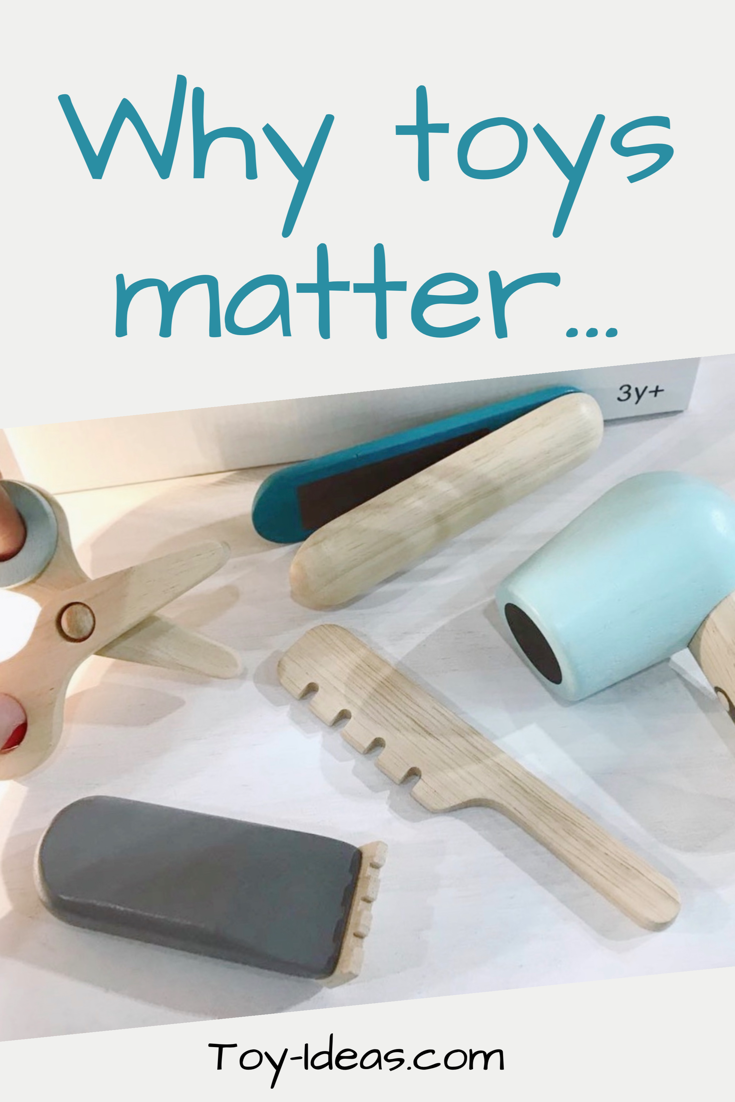In short – Yes! That’s why I’m here.:)
A child’s primary job is to play, and toys are their tools. Just as you need the right tools to get your job done, so does a child. Since we know that children can gather new skills and information through play, it’s important for us to keep in mind how the toys we select will impact that experience. Different types of toys help to support different areas of development. It’s important for us to be mindful of which toys we’re selecting, how they are using them, and what experience those toys provide.
Please note: I am a participant of the Amazon Services Associates Program and have included “affiliate links” for all the toys. This means that when you click the pictures or links provided and make a purchase, I receive a small commission on the toy at no extra cost to you. You can read more about the Amazon Associates Program here.
When it comes to electronic toys, if you select one that needs simply to be turned on in order to put on a show, you’ll find that you’re limiting your child’s experience and likely their overall engagement with that toy. When a toy will light up, jump, sing, and dance without your child continuing to directly initiate that process, it provides some brief entertainment and little else. In fact, you’ll find that children will quickly lose interest when they find that the toy is not responding to them. Even when these toys are able to hold your child’s attention, you can be sure that they aren’t learning a tremendous amount from that interaction.
On the other hand, if you select a toy that reacts in a specific way when something is pressed, your child will begin to learn that there is a direct response to their actions and that he/she has control over their play experience. Aside from teaching that important cause-and-effect lesson, the toy is likely to hold their attention a lot longer, as they work through exploring different ways to make the toy do new and exciting things for them. Toys like these will engage their curiosity and will make them want to focus. The more they play, the more they’ll continue building different skills. An example of these toys would be the Pounding Wooden Toy House and this Piano Xylophone as children have to perform an action to see or hear the toys respond. These are only two examples out of so many where a child is actively directing their play experience rather than passively watching. There are endless good quality toys on the market but you have to understand what to look out for.
An important note to remember is that toys definitely don’t need to be expensive or have a lot of bells and whistles in order to make an impact on your child. Simpler toys have a lot to offer and allow for many opportunities for learning and engagement. Giving your child blocks to stack is a fantastic way to develop fine motor skills and hand-eye coordination. They also have to practice grading pressure as their tower gets higher, and they’ll need to flex their creative muscles in order to decide what it is they’re building. Simple toys like these give your child full control of their play experience.
Puzzles are another perfect example of simple toys going a long way. Puzzles require children to problem-solve as they try fitting different pieces together. They’ll need to practice recognizing patterns and shapes, and how small meaningful parts make up the whole picture. Puzzles require children to actively focus. “Old fashioned” toys like these aren’t necessarily the ones that come to mind first when thinking of your child’s development, but the lessons and new skills that they provide are vital to your child’s growth and important to keep in mind.
So, to answer the question again – Yes, it definitely matters which toys you select for your child, assuming that your goal is to be thoughtful about their play experience and development. Making a simple change to which toy you’ve given them could make a significant impact on their learning and cognitive development.
